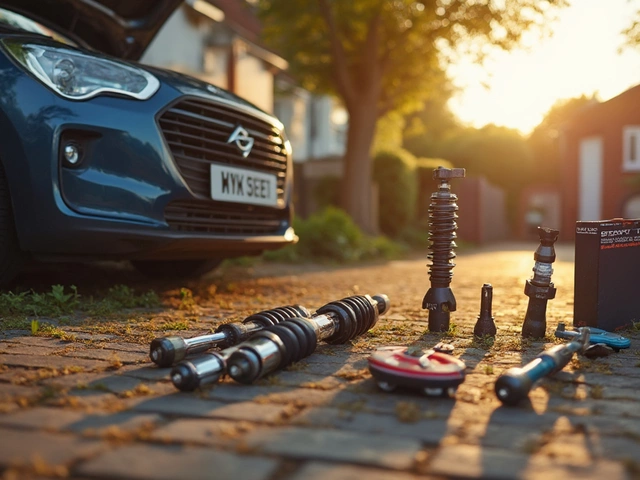Exhaust Types Explained – Which One is Right for You?
When you hear that rumble under the hood, you’re listening to the exhaust doing its job. But not all exhausts are created equal. Knowing the differences helps you pick a system that matches your ride, your budget, and how you like to drive.
Common Exhaust Types
Most cars start with a **stock exhaust** – the factory‑built pipe that meets noise and emissions rules. It’s quiet, reliable, and cheap to replace if it rusts.
Upgrade seekers often look at **cat‑back systems**. These replace everything from the catalytic converter back to the tailpipe. They usually add a deeper tone and a small boost in horsepower because the pipes are larger and smoother.
If you want even more performance, a **header‑back system** goes further. It swaps the exhaust manifold (or headers) for a free‑flowing design, then continues with the cat‑back sections. This can shave a few tenths of a second off your 0‑60 time, but it may need a tune to keep the engine happy.
**Performance mufflers** focus on sound. They use chambers and perforated cores to create that aggressive growl without sacrificing too much flow. They sit between the catalytic converter and the tailpipe, so they work with any cat‑back or header‑back setup.
For trucks and off‑road rigs, **stainless steel dual‑pipe exhausts** are popular. Two pipes let each cylinder breathe better, which helps low‑end torque and gives a loud, throaty note.
Choosing the Right Exhaust for Your Car
First, ask yourself what you care about most: sound, power, fuel economy, or staying legal. If you just want a nicer tone, a cat‑back muffler upgrade can be cheap and easy. If you’re chasing horsepower, a header‑back kit paired with a performance tune brings the biggest gains.
Next, think about material. **Stainless steel** resists rust and lasts longer, but it costs more. **Mild steel** is lighter on the wallet but can corrode faster, especially in wet climates like the UK.
Fit is another factor. Some exhaust kits are designed for specific makes and models, while universal kits need custom bends or welds. A well‑matched kit saves you time and extra labor at the shop.
Don’t forget regulations. In the UK, any modification that raises noise above legal limits can fail your MOT. Check local laws before you buy a loud aftermarket pipe.
Finally, factor in installation costs. A simple cat‑back swap might be a DIY job if you’ve got basic tools, but header‑back systems often need professional welding and tuning. Ask your local garage, like Northwich Tyres Centre, for a quote before you commit.
Bottom line: there’s a exhaust type for every driver. Whether you want a quiet commuter, a growling weekend warrior, or a track‑ready machine, understanding the options lets you make a smart choice without wasting money.
 4 February 2025
4 February 2025
Exploring Diverse Exhaust Systems: A Deep Dive into Their Types and Functions
Exhaust systems are crucial components of any vehicle, responsible for channeling away gases and impurities. This article explores the various types of exhaust systems, such as single, dual, high-performance, and more, illuminating their unique attributes and purposes. By understanding these systems, car enthusiasts and everyday drivers alike can make informed decisions about maintaining and enhancing their vehicles. With interesting facts and practical tips, readers will gain a comprehensive view of how exhaust systems influence vehicle performance and efficiency.
Latest Posts
-

Should I Change Spark Plugs If Nothing Seems Wrong?
-

How to Make Your Car Suspension Softer: Easy Tweaks That Matter
-

How Long Does Clutch Replacement Take: A Comprehensive Guide
-

What Happens to Your Car When It Runs Out of Engine Oil?
-

How Long Does a Clutch Last After You Smell It Burn? Real-World Lifespan and Advice

0